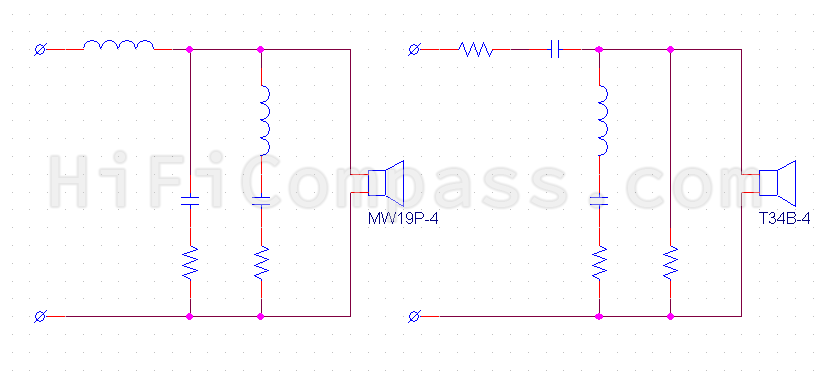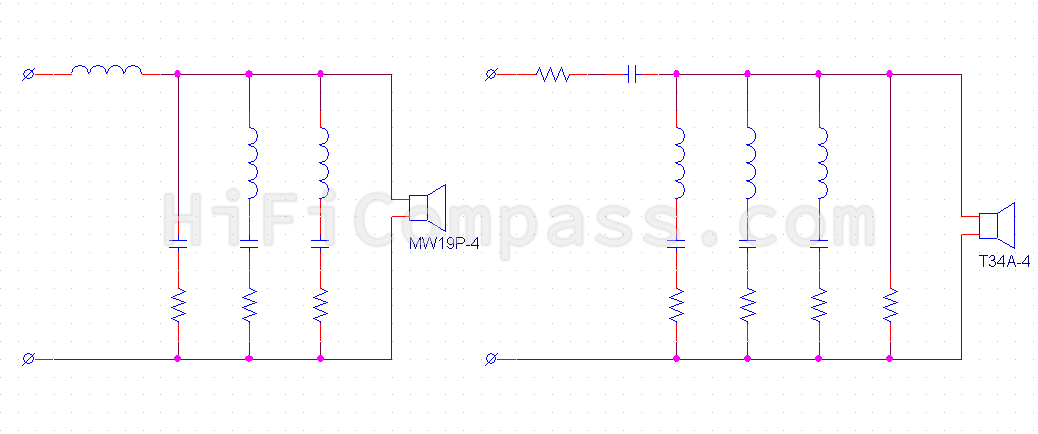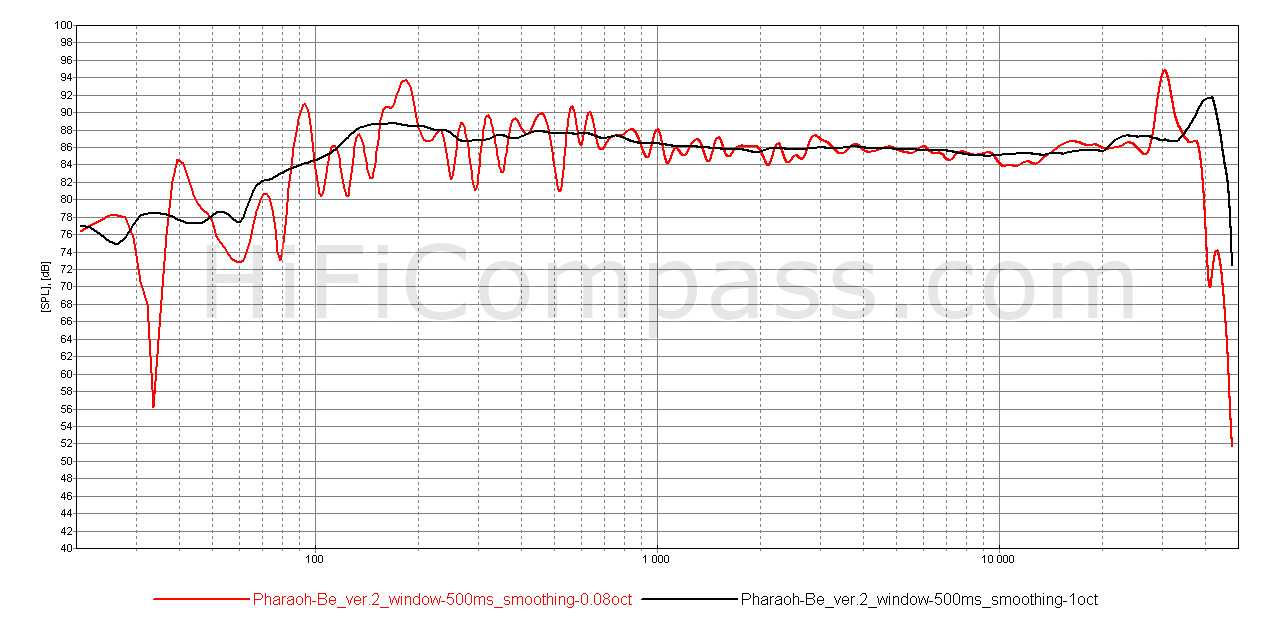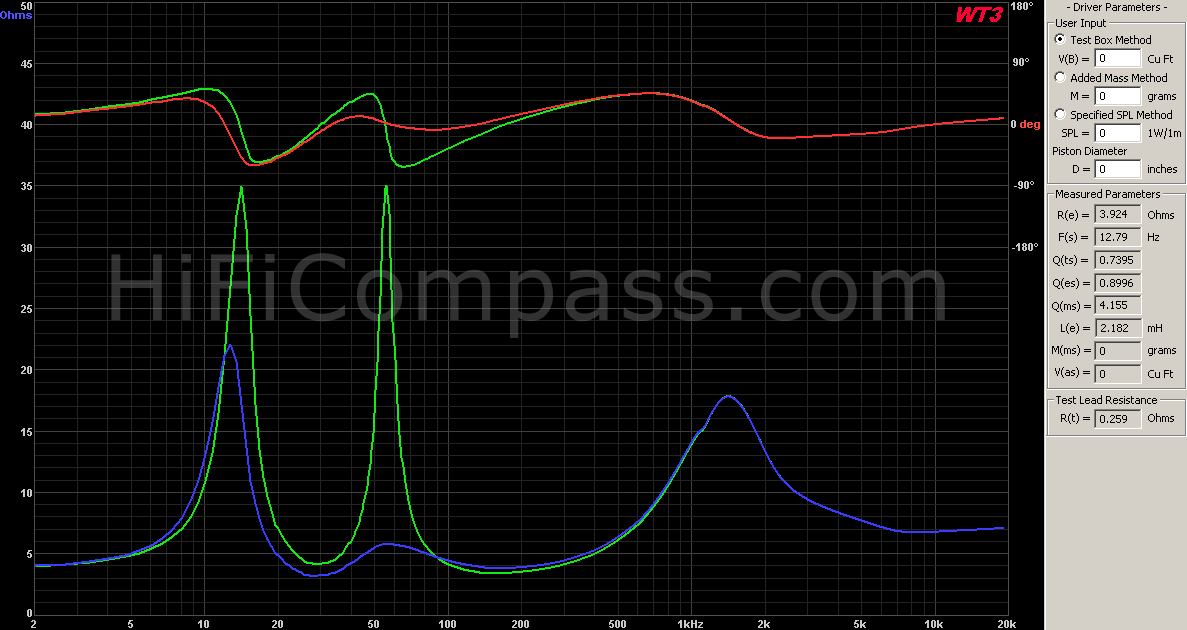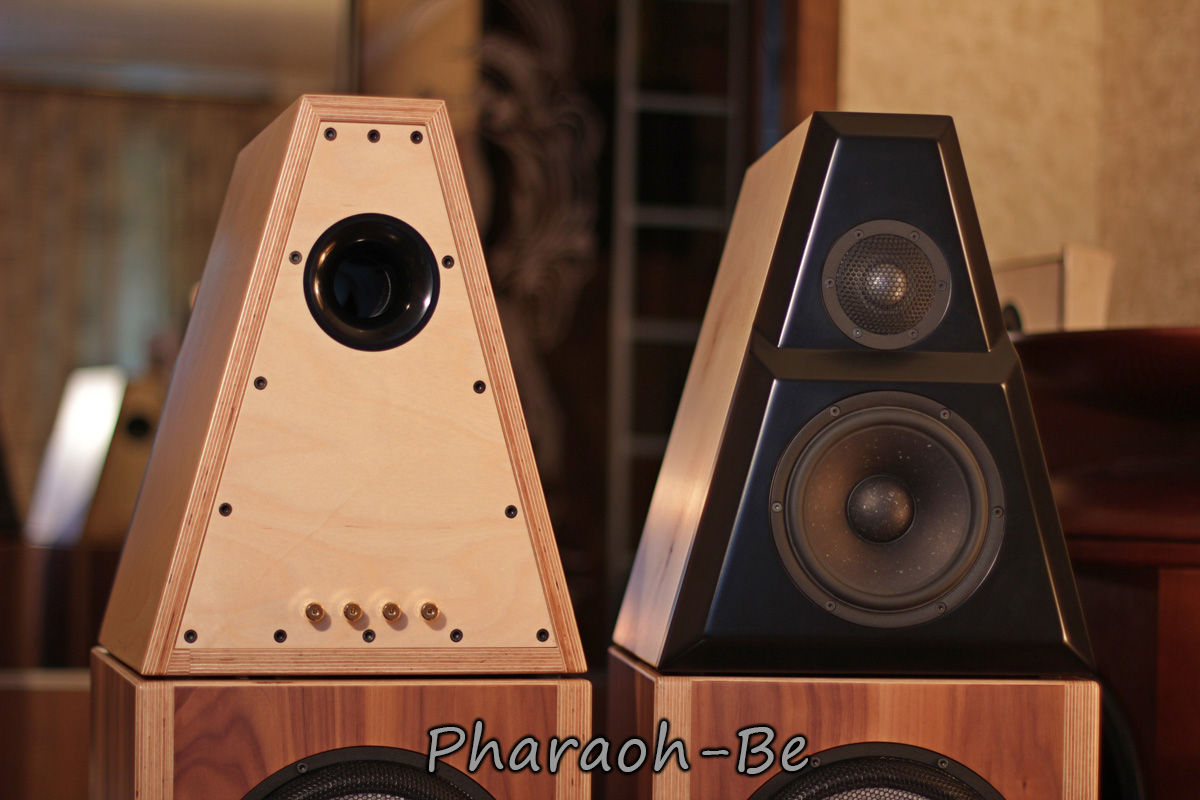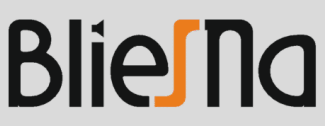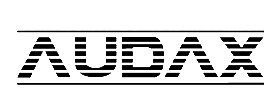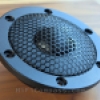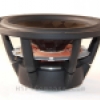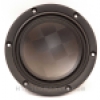HiFiCompass
Pharaoh-Be
Project evolution
Pharaoh-Be is a modification of Pharaoh-AMg project, consisting in the use of a tweeter with a beryllium membrane. The BlieSMa company have issued its second product - the tweeter T34B-4. That tweeter have the same construction as T34A-4, except the dome profile and material. The membrane of the new tweeter made of beryllium and has more shallow profile. Of course, such changes could not but affect both the objective technical and subjective characteristics, so we decided to test the new product in our project. This entailed the branching of the project and the assignment to all of Pharaoh modifications based on aluminium-magnesium tweeters of the "AMg" index in the title and the "Be" index for the beryllium tweeter version.
Due to the small difference between parameters of T34A-4 and T34B-4 tweeters the both Pharaoh-Be crossover versions turned out be identical by topology with ones of Pharaoh-AMg, having differ by some components values only. To avoid unnecessary repetition, we recommend that you read the details of the Pharaoh-AMg project before reading the following material
Pharaoh-Be_ver.1
Figure 1 shows the "raw" frequency responses of the MW19P-4 and T34B-4 in the Pharaoh enclosure. The measurements were carry out at distance 1 meter at voltage level of 2.83 Volt. The width of measurement window - 500 ms. The averaging for MW19P-4 is 1/1 octave and 1/12 octave is for T34B-4.
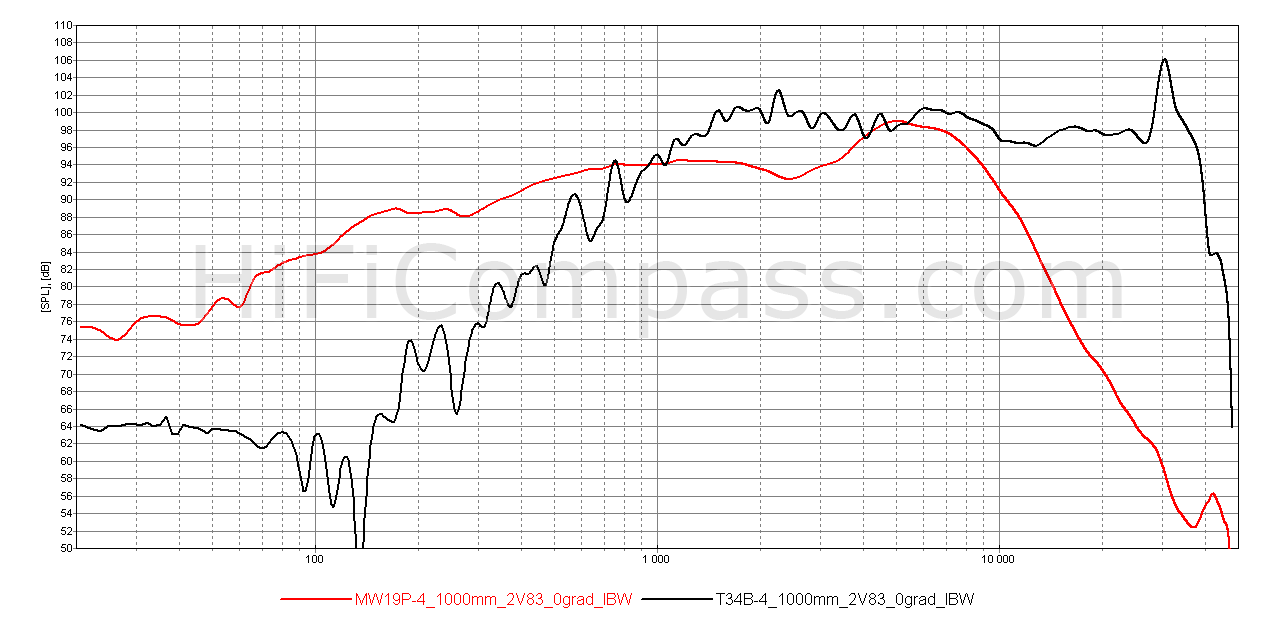
Fig.1 Speaker's responses in a Pharaoh enclosure
Fig.2 shows Т34B-4 frequency responses measured for mounting it in a big flat baffle (black curve) and in a Pharaoh enclosure (red curve). The measurement window width - 4 ms, the averaging - 1/12 octave. It is clearly can be seen degrading sound wave diffraction effects on the frequency response behavior.
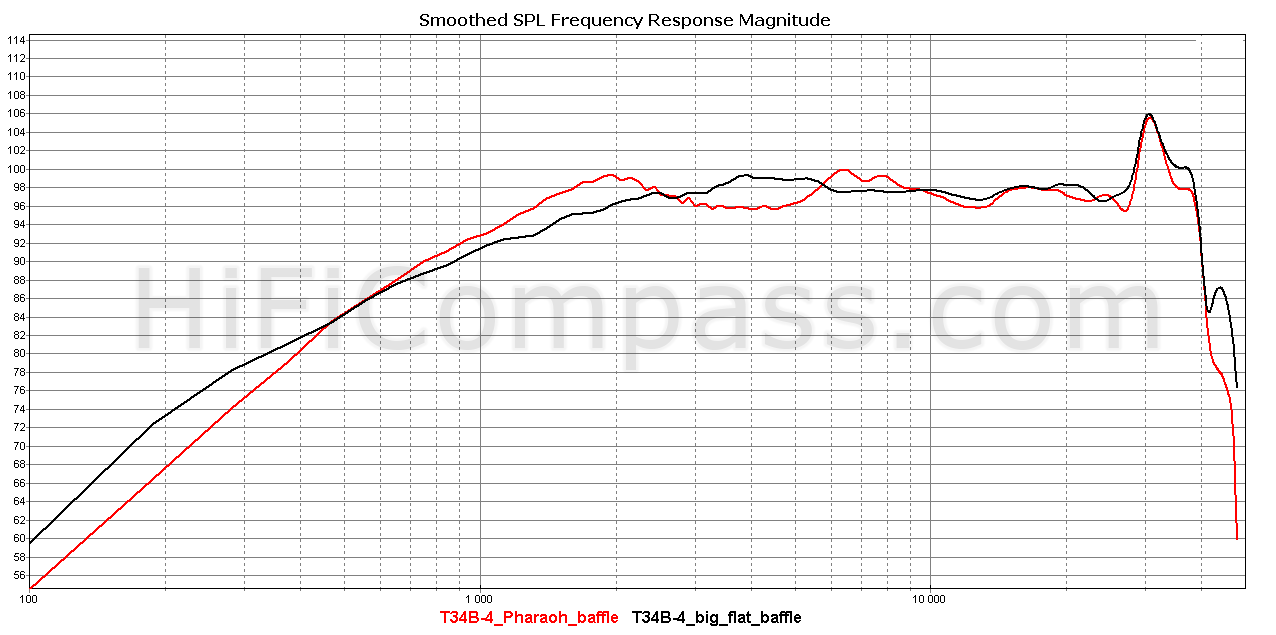 Fig.2 T34B-4 frequency response in a big flat baffle (black) and in a Pharaoh enclosure (red)
Fig.2 T34B-4 frequency response in a big flat baffle (black) and in a Pharaoh enclosure (red)
Fig.3 Pharaoh-Be crossover schematic (version 1)
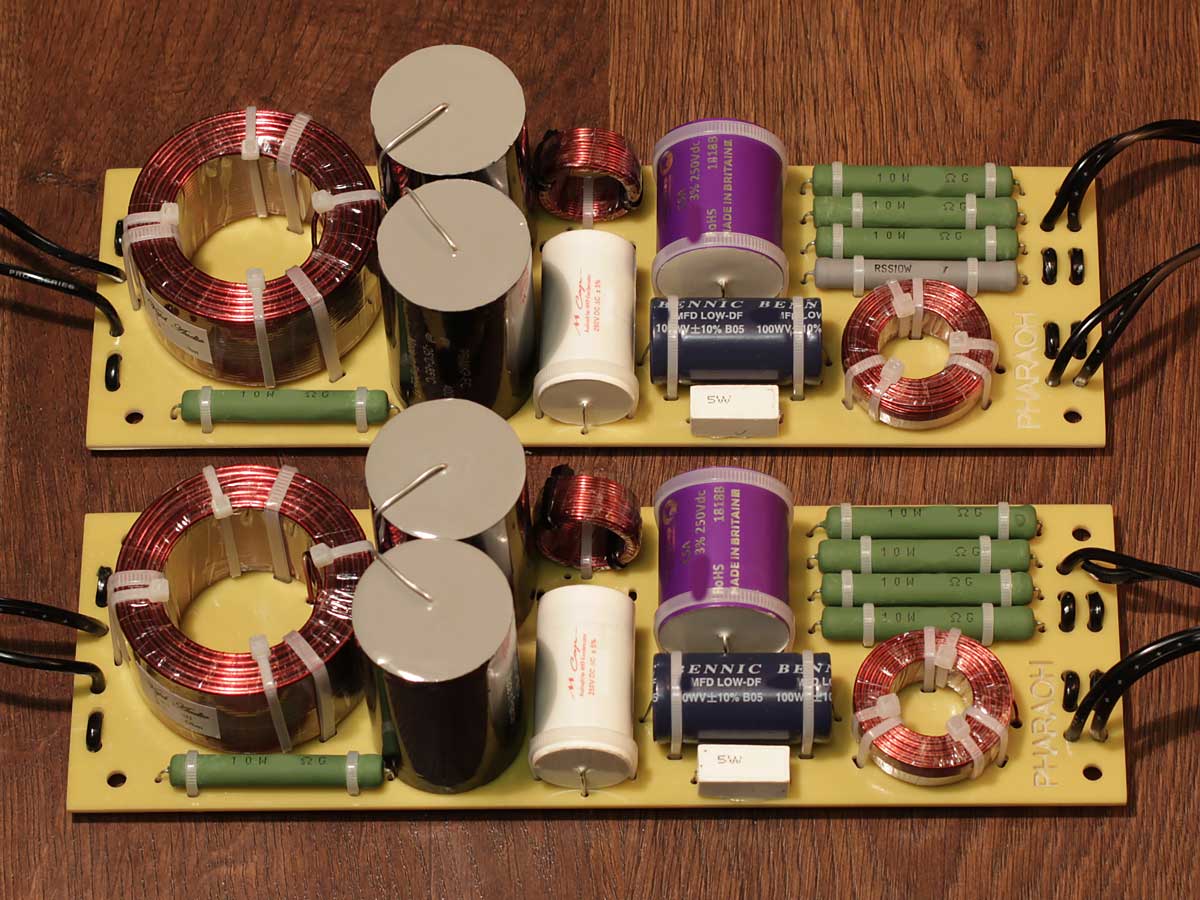
Fig.4 Pharaoh-Be crossover (version 1)
Fig.5 and Fig.6 - the final magnitude frequency response, impedance module and phase responses.
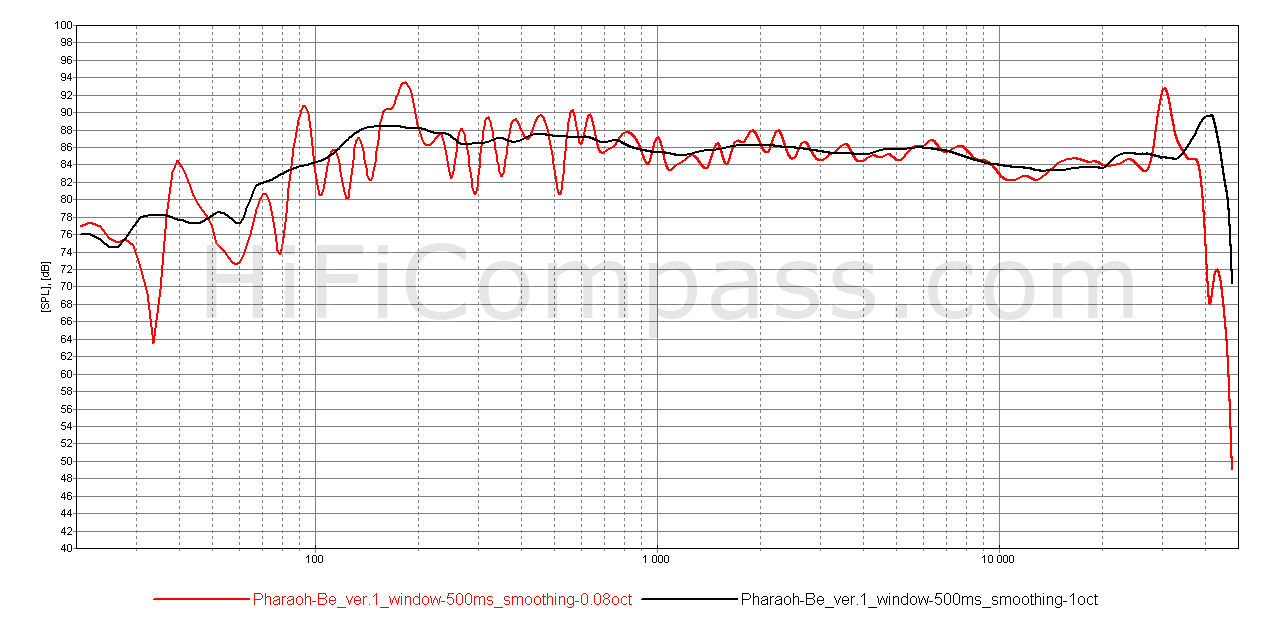
Fig.5 Pharaoh-Be (version 1) magnitude frequency response at distance 1 m/2.83 Volt
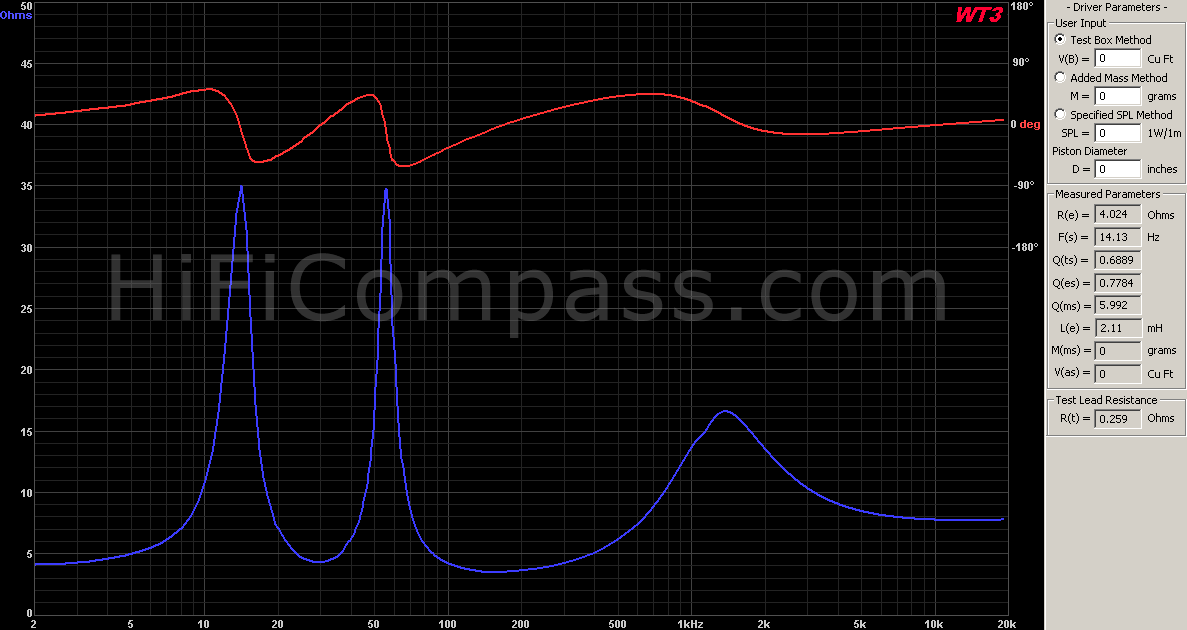 Fig.6 Impedance module and phase frequency responses of Pharaoh-Be (version 1)
Fig.6 Impedance module and phase frequency responses of Pharaoh-Be (version 1)
Pharaoh-Be_ver.2
Fig.7 Pharaoh-Be crossover schematic (version 2)
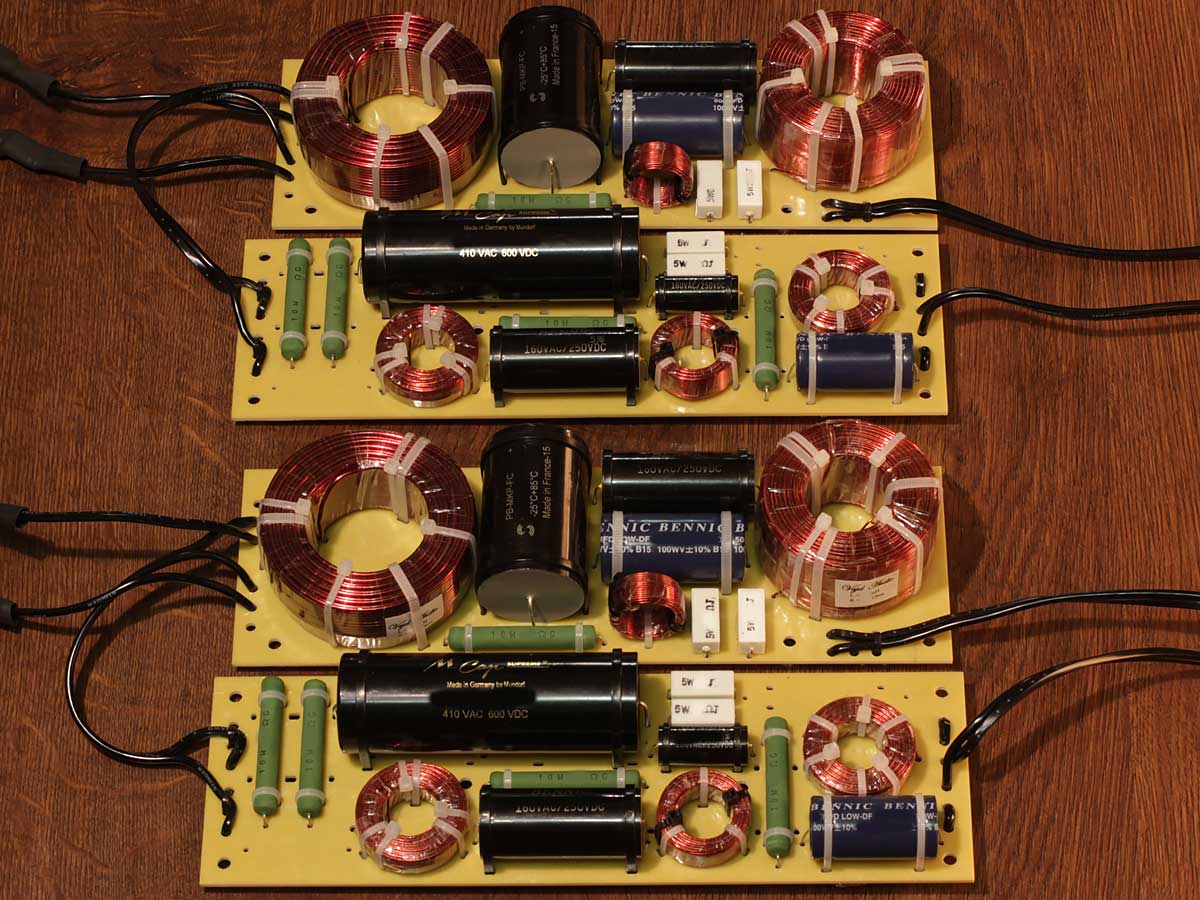 Fig.8 Pharaoh-Be crossover (version 2)
Fig.8 Pharaoh-Be crossover (version 2)
Fig.9 Pharaoh-Be (version 2) magnitude frequency response at distance 1 m/2.83 Volt
Fig.10 Impedance module and phase frequency responses of Pharaoh-Be (version 2)
Pharaoh-Be technical specifications
- Frequency range – 40 Hz - 24 kHz (-3 dB level)
- Sensitivity – 86 dB/2.83 Volt*1m
- Nominal impedance – 4 Ohm (minimal value is - 3.4 Ohm at 33 Hz)
- Bass reflex design
- Size (HхWхD) – 450mm*360mm*450mm
- Weight - 44 kg/pair
Some words about the sounding
For sure, the main question after the appearance of the Pharaoh-Be version will be the question of what the use of the new tweeter has brought and how this affected the sound of the loudspeakers. Let's try to answer this question, although the verbal interpretation of the sound is not the simplest task.
In technical sense, the beryllium tweeter has a smoother response and higher sensitivity. In this project, having a very low crosspoint frequency and not very steep slope of tweeter frequency response off the passband, a higher sensitivity gives the tweeter an additional margin for overload capacity. It is important.
From a sound character point of view Pharaoh-AMg and Pharaoh-Be are very different. Pharaoh-AMg has a slightly deeper sound stage in general and a little closer to realistic arrangement of sound images in depth. Generally speaking, the imaging of Pharaoh belongs to the category "there, behind the loudspeakers", i.e. it is mostly placed at some distance, is formed broadly and completely, which gives the listening impression similar to the one you feel being in the concert hall not at the stage near the performers, and not in the front row, but a little further. Thanks to this you can see the whole sound picture entirely and you never have the feeling that the performer's lips are about to touch you and he breath directly in your face or you can reach him by your hand. Pharaoh-AMg paints a sound picture in this respect a little better than Pharaoh-Be.
Pharaoh-AMg also slightly better conveys the atmosphere of the room, the space, especially when it comes to "live" concert recordings. It seems they have more metal in percussion and are more expressive in that.
In a timbre, in the overtone richness and texture of sound, in the splitting of sounds on the smallest components Pharaoh-Be is much more interesting. They sound softer, more comfortable and more delicate, with a lot of after-sounds. Preserving all the advantages of hard membranes, they sound with a "silk" character, in other words, simply adding a lot more colors to the palette. The ether between performers and instruments seems to be filling up with something. In this respect the T34B-4 is simply an amazing tweeter! Not having right now the opportunity to compare T34B-4 directly with other beryllium tweeters, but relying on my own memories, I should add that I do not recall such a delicate and elegant sound handwriting in my projects using beryllium tweeters Scan-Speak D3004/6640 and D2908/7140.
For fans of rock music and electronic genres we would recommend Pharaoh-AMg, and for those, who have more classics, jazz, soul, instrumentals in the diet, we definitely recommend Pharaoh-Be.
The price and where to purchase
Pharaoh-Be is being offered at HiFiCompass.com shop in a form of set of components and documentation needed for building of loudspeakers by himself, except the enclosure parts. See more...
p.s. Pyramid like forms, the fibers of Egyptian papyrus and the sound that seizes you from the first minutes… Therefore – Pharaoh!
CONTACTS
- Ukraine
- (+380) 95 904 7827
- hificompass@gmail.com
LAST NEWS
-
27 Mar 2025
-
04 Mar 2025
-
25 Feb 2025
-
10 Feb 2025

